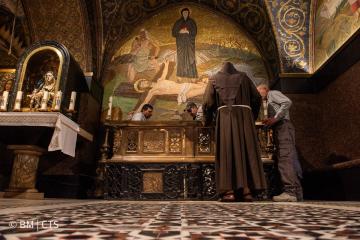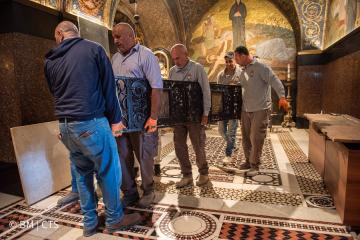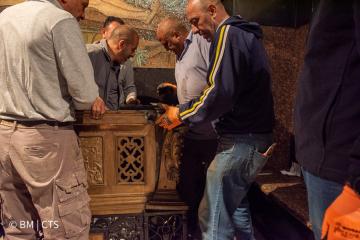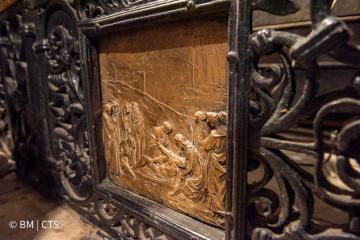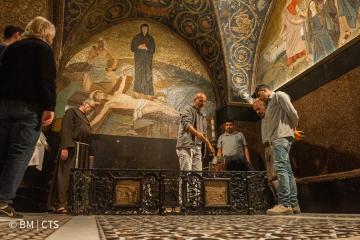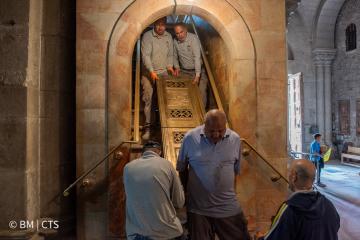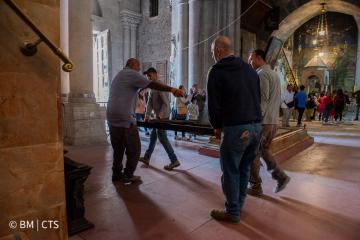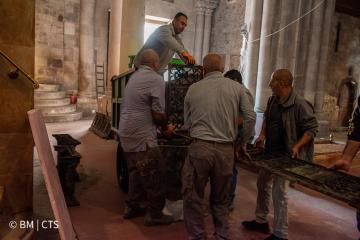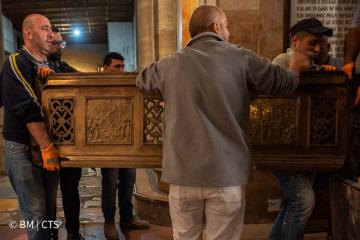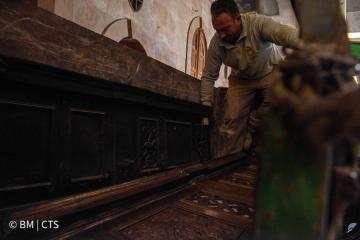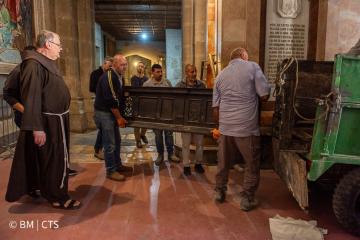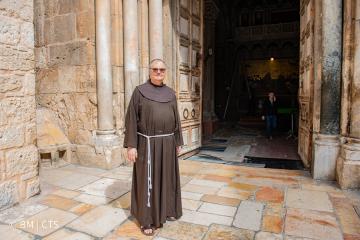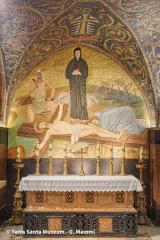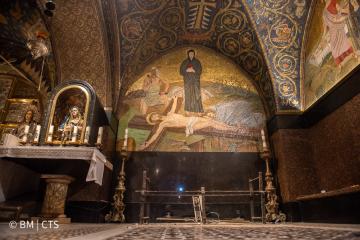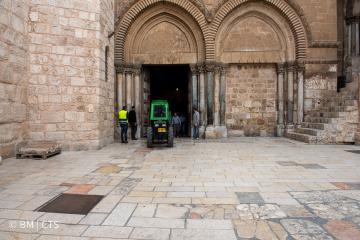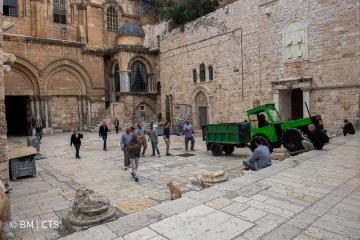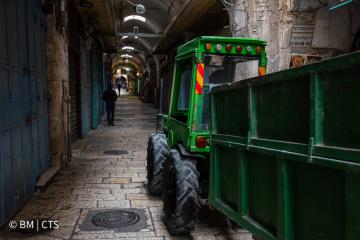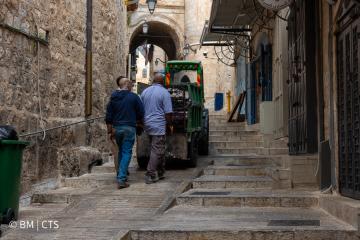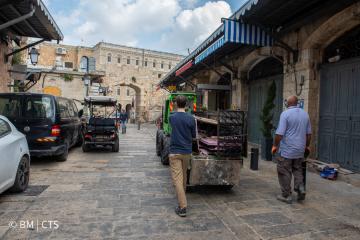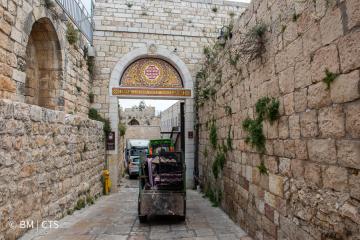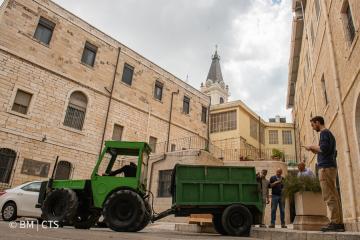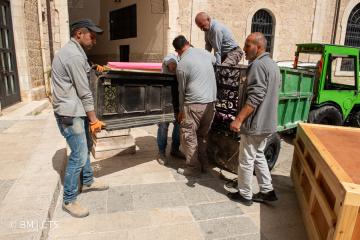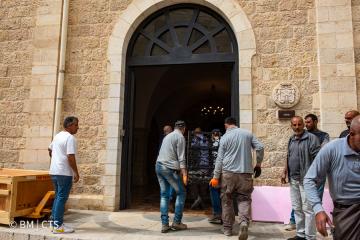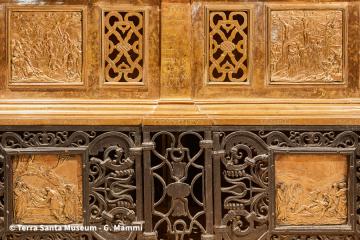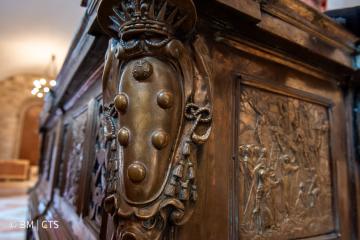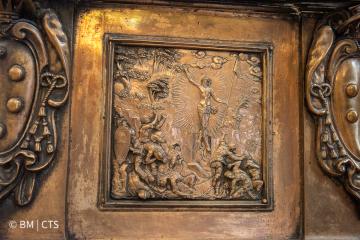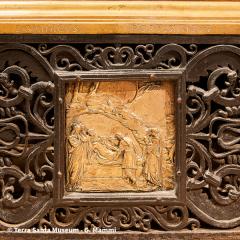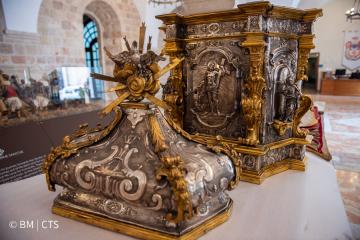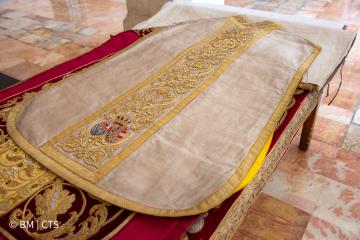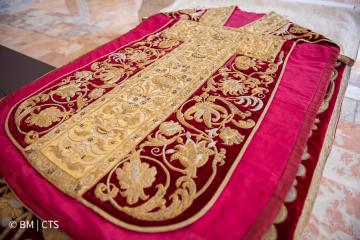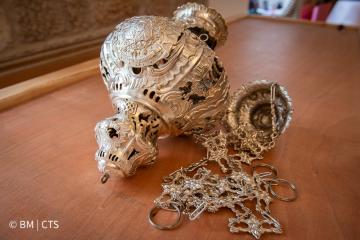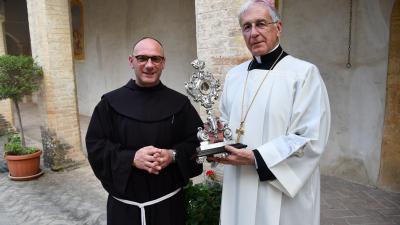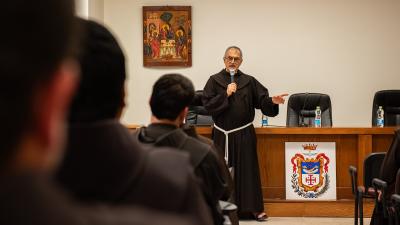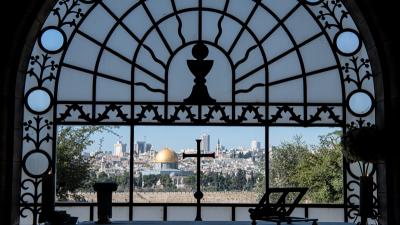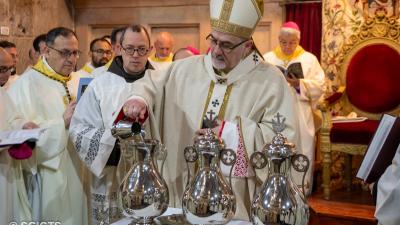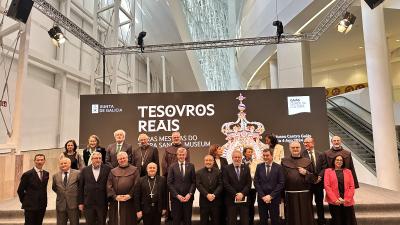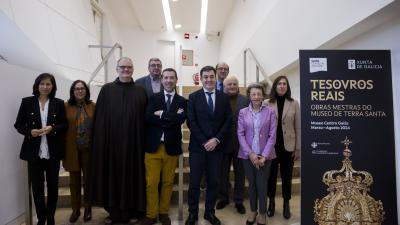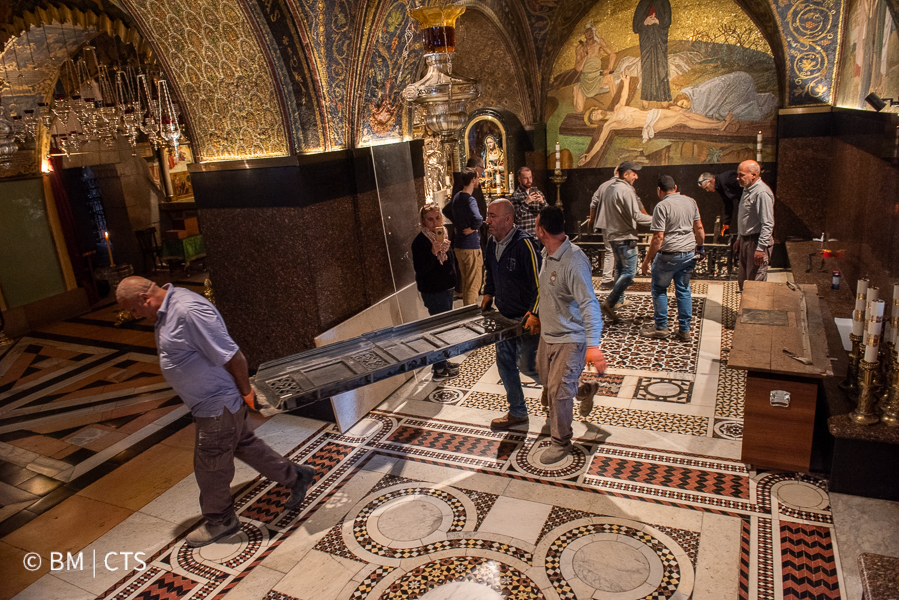
On Monday 8th April, the altar in the Latin chapel of the Crucifixion, on Calvary (in the Basilica of the Holy Sepulchre), was removed. In the next few days it will be shipped to Florence, where it will be restored and exhibited in the Museo Marino Marini, in the famous Rucellai Chapel.
A homecoming
The altar was donated to the Custody of the Holy Land by the Grand Duke of Tuscany Ferdinando de’ Medici in 1578. At the exhibition in Florence, it will be on display alongside the 15 th century sacellum of the Holy Sepulchre, an architectural gem by Leon Battista Alberti. Fra Stéphane Milovitch, President of the Holy Sepulchre, explains that “the purpose is precisely to present these two works together: this way we will have the death and the resurrection of Christ of the same period (16th century) and from the same city, Florence.”
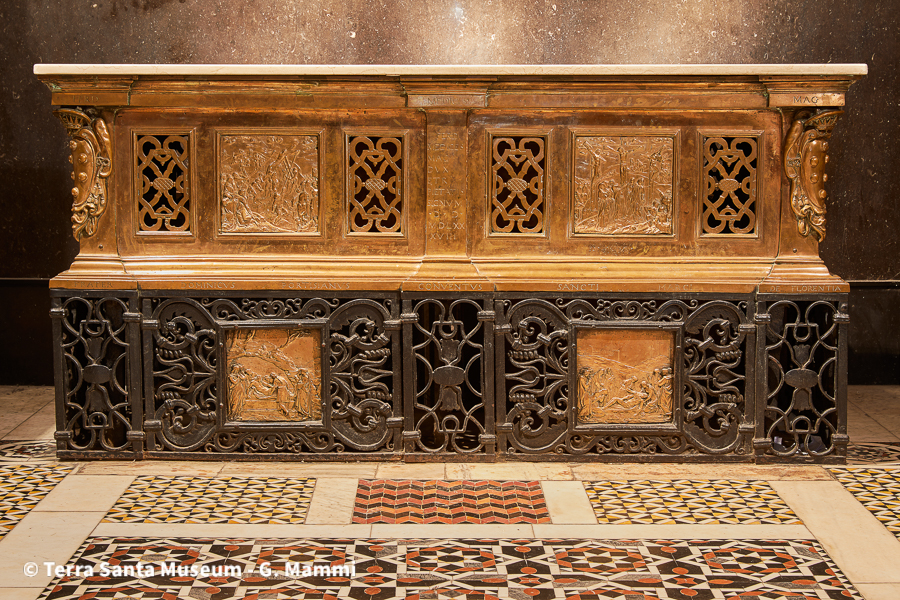
This decision is also part of the wider policy of this project. The exhibition is taken around the world – after Portugal, it is now in Spain and after Florence it will be in the United States, while other venues are being studied. “The most important works are on display in all the exhibitions, but in each place, we tend to add works linked to the hosting country. In Portugal and Spain, they were works linked to the Iberian Peninsula. For Florence we are emphasizing works that come from Tuscany and northern Italy.
An altar for the Holy Sepulchre
This altar is incensed every day during the daily procession by the friars of the Custody of the Holy Land, and the Masses of the pilgrims are celebrated on this altar every day. It is also the altar used for the liturgy of Good Friday.
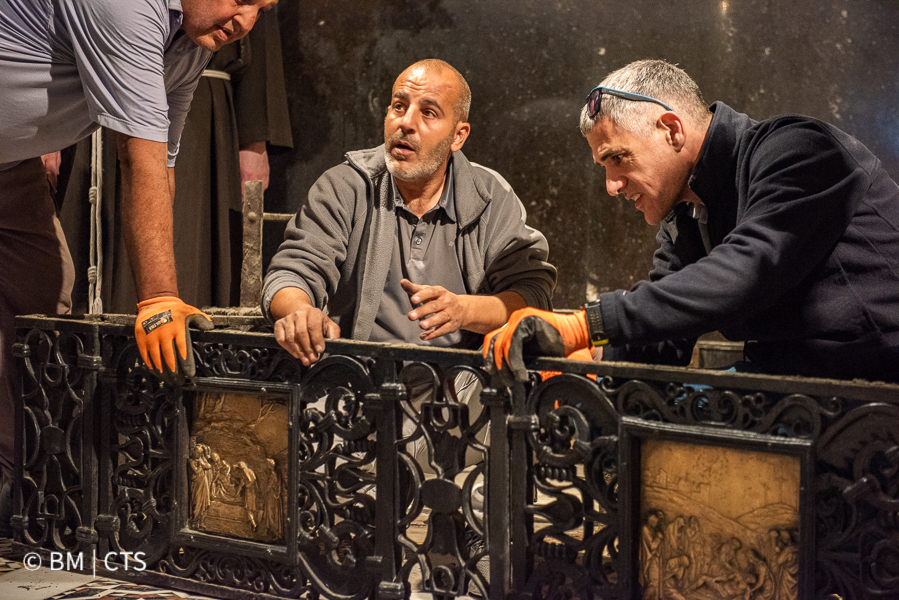
“It seems that originally that altar was offered to cover the Stone of Unction,” fra Stéphane tells us. “Between the 18th and the 19th centuries, a base of wrought iron was made at St Saviour, on which the altar was placed. What we see today at Calvary is a work which includes the technique of 16th century Florentine craftsmen (the upper part) and that of Arab craftsmen of the 20th century (the base), which merge harmoniously. It is also an image of what the Terra Sancta Museum aims to be.”
The Medici altar was fixed in the chapel on Calvary in the 1940s, during restoration works and since then it has never been moved or restored. Six tiles are set in the altar, which today are particularly damaged: two on the sides and four at the front (originally there were two in the front and two behind so that it would have been visible on all sides). It is a cycle illustrating the Passion of Jesus, made is the same style as those which are in the Baptistery of St John in Florence.
Treasures on display (and in restoration)
The aim of the project is to make known in the world the artistic heritage of the Custody of the Holy Land and at the same time contribute to its restoration. Not only of the pieces which will be in the Historical Section of the Terra Sancta Museum, but also of the treasures in the various shrines, as in this case.
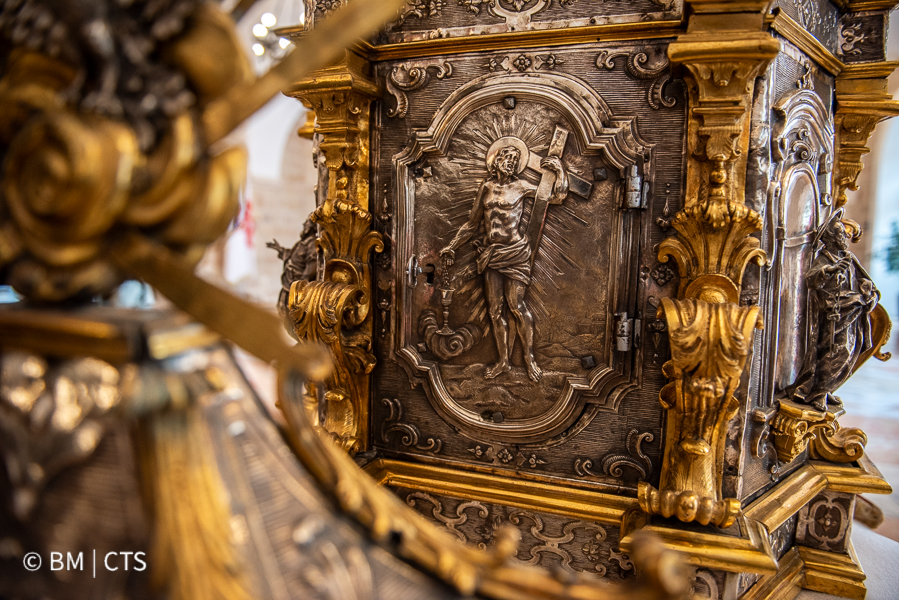
In addition to the altar, other works are ready to leave the Holy Land for Florence: a tabernacle that is used at St Saviour’s on Holy Thursday, a Neapolitan work in silver from the 18th century, vestments, an antiphonary of the Custody from the 17th century and a lamp offered by the Grand Duke of Tuscany.
A “new” altar for the jubilee year
The exhibition will be opened on 12th September, on the eve of the feast of the Holy Cross. For the period of restoration and exhibition, it will be replaced by a temporary altar. “The exhibition will end in January 2025 so,” fra Stéphane concludes, “the altar should be replaced in situ for Lent next year, completely renewed and shining for the celebration of Good Friday 2025, the year of the Jubilee.”
Marinella Bandini


